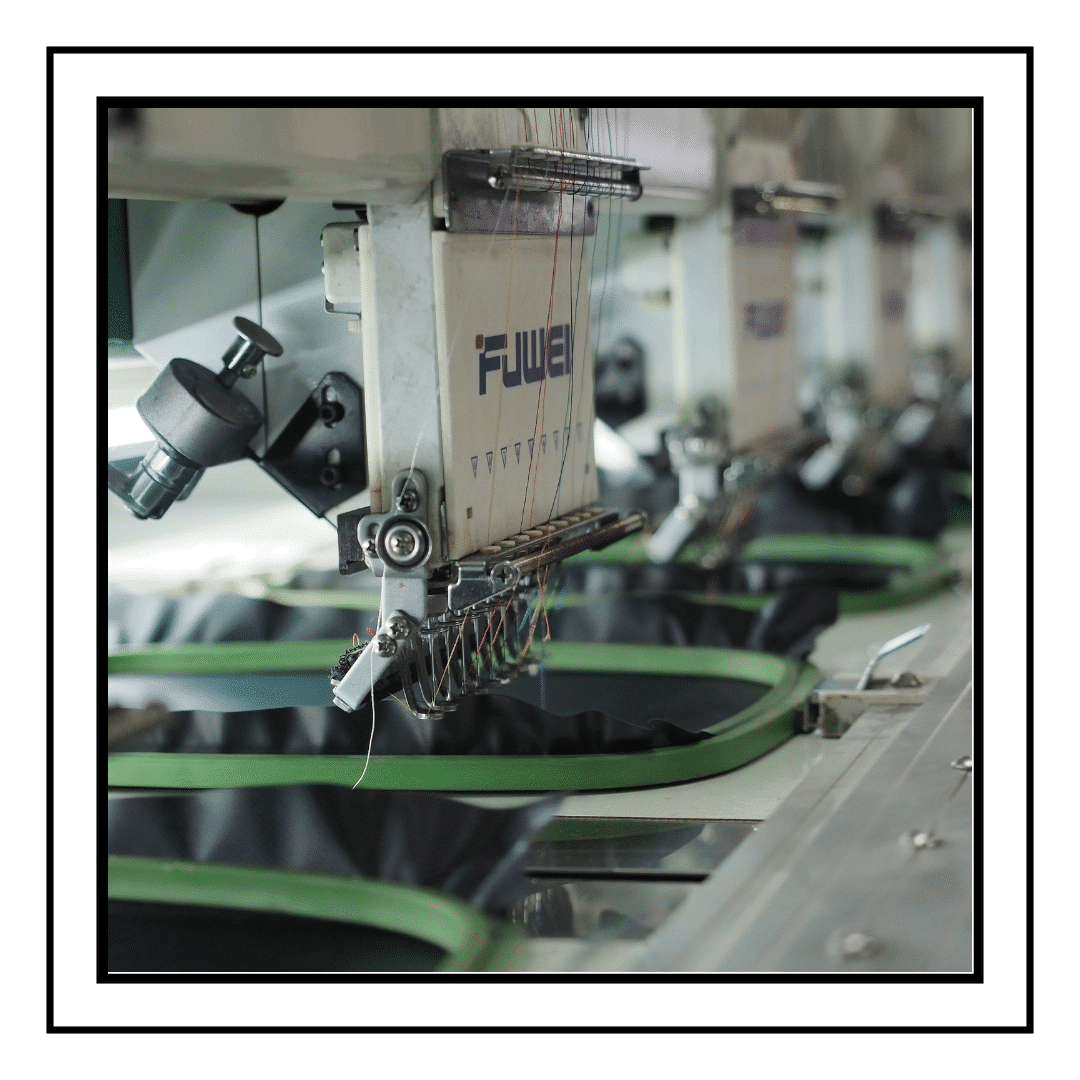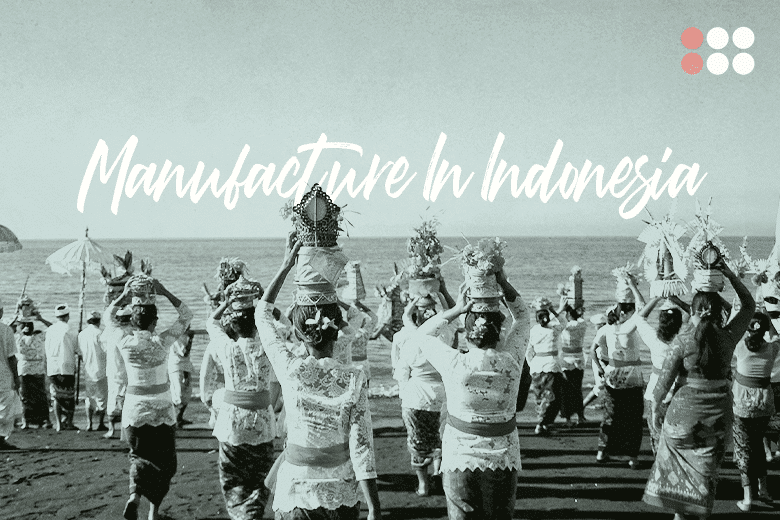Overseas Garment Production: The Real Story
Whether you are a new or established designer, it’s worth checking the pros and cons of overseas garment production. As with any industry, you can find positive and negative aspects to producing your products overseas.
The Public Perception
Over my lifetime, the public perception of foreign-made goods has declined. At the same time, the perception of American-made goods has increased. Around the same time that beards and messenger bags came back into fashion, so did the “Local First” movement. I admit it. I was a HUGE proponent of local first and buy American, etc. And now, even though I live in Indonesia and run an overseas garment factory, I’m still into it. Except now I’ve become a bit more “Buy Indonesian” for all the same reasons.
Americans, and everyone really, often have a love/hate relationship with items that are made in other countries. Usually they like the price, but they are distrustful of the quality and the environment in which the items were made. That’s totally understandable. We’ve been fed this idea of the “sweatshop” and the poor conditions of factories overseas. To our credit, Americans actually care about it. Almost every client we meet has concerns about ethics and sustainability. That part is AWESOME. I’m so glad that people care! But, we also need to confront our own biases and the effect that “poverty porn” has had on the global manufacturing industry.
The Reality
We have to chuckle sometimes though because some of the stereotypes are so outdated. When they arrive in Bali and see our facility, for example, they’re just totally shocked at how civilized things really are. I can say comfortably that the reality of offshore production is, in general, very different than the stereotype. But, that does not mean that buyers shouldn’t be concerned. There are evildoers out there in the world, as we all know. Doing your homework and being genuinely concerned about how and where your goods are made is how you avoid becoming one yourself.
The reality of overseas garment production is that every industry, in every country, is different. Some countries are rather horrible when it comes to protecting human rights. Other countries, maybe right next door, are great. Indonesia, for example, has some really great benefits over other garment producers. The only way that you will ever know that you are doing the right thing is by doing your homework and finding someone you trust to represent you. Go to the factory. Meet the workers. Visit their homes if you can. You will find both great and horrible employers in every corner of this world. Including your own.
The Ethics of Overseas Garment Production
So if you’re concerned about the ethics of overseas manufacturing, let’s put it this way: There are just as many great, ethical options for overseas garment production as there are in your home country. Foreign people need quality jobs too. If you’re providing well-paid employment for people that need it, then you can sleep well at night. It’s not necessarily nobler to only employ people in your home country. The reality is more nuanced than that.
Shop Local!
Trust me, I get it. I love supporting my own community. I like to shop small. Spending money in your community enriches the lives of the people closest to you. It provides job opportunities and stabilizes the local economy. No question. Perhaps the biggest benefit of all is the benefit to the environment. Buying and consuming local seasonal produce, for example, is one of the best things you can do. Particularly heavy or bulky items. Tools, machinery, raw materials, wood, etc. Any time you can save on the distance things need to travel, it’s a win for mother earth. There’s no doubt that buying local carries many benefits.
The Argument for Offshore Production
Here’s the thing about buying local. It doesn’t make logical or financial sense in some cases. Sometimes it’s so prohibitively expensive that it’s just a non-starter. There is a price at which a product cannot sell. But the market still demands that product. So that item is produced overseas and imported. Sometimes it’s because the materials are just not available in your home country. Sometimes it’s because of the high cost of labor. And sometimes it’s because of the high cost of importing the raw goods. For those items to be produced locally it would be impractical. Why import a raw good at the same price as a finished good? It’s more efficient to make the goods nearest to where the supply is found. Then you’re not also importing the waste material. Environmentally-speaking, it can be more eco-friendly to produce an item offshore. Whether or not to buy a locally-produced item really just depends on the item.
But What About Clothing?
That’s a tougher question. Raw ingredients for clothing can be found in most parts of the world. The machinery to convert the raw material into fabric are also found almost everywhere. So why should clothing be manufactured overseas? Why not manufacture locally? The answer: Cost of Labor.
The cost of labor in the US, Australia, Europe and other developed countries is simply way too high for most fashion labels to survive. Most clothing is still made by hand. Not by machines. (And would you want it be?) So, in addition to the fabrics, you’re paying for a human to make your clothes. That human can cost maybe $12-$18/hr in the US. And still struggle on those wages. In Indonesia, the same human with the same skill can live comfortably on $3/hr. And that’s a GREAT wage in Indonesia. Far, far above average.
Here’s a quick, unscientific example:
Let’s say an item takes 1 hour to cut & sew, and consumes $5 in raw materials. In the US, at a $15 wage, that item would have a hard cost of $20. In Indonesia, that same item would be $8. That’s a big difference, but we’re not done. At a typical retail markup of 4-6x from the hard cost of the item:
The Made in the USA item becomes an $80-$120 retail price
The Indonesian item becomes $32-$48.
Overseas garment production is substantially cheaper. If you’re concerned about the health of your local economy, you have to consider the earning power and the spending ability of the average person in your community.
The Bottom Line
It’s easy to say, “well the local product is WORTH more”. Maybe. But to whom? Is the common person able to afford that item? Or is that item completely out of reach for the common person? Regardless of what you or I believe, the market has voted with their dollars. The common buyer spends their money on imported goods at reasonable prices. That’s not to say that the consumers are right either. Just because they spend their money at Walmart doesn’t mean it’s the right thing to do. But it does mean that consumers are price-sensitive. There’s no sense in putting yourself, and American company (or Australian, etc!) out of business just because you are selling items that your customers can’t afford. That’s a local job lost too. And what do you do then? Go get a job at Walmart?!
The Solution Lies in the Balance
You’re right to care about things that matter. You’re also right to want to work for yourself. Independent business is healthy business. Best of all, you CAN have it both ways.
Those same “local first” values can guide you as you set up your ethical overseas garment production:
> Focus on quality. Provide a quality, durable product that will last. Your customers deserve it.
> Don’t chase the lowest price. The lowest prices will be the result of the lowest wages.
> Remember the workers. Clothes are made by people. Care about those people.
> Good ethics come from the top. Care about every step, every ingredient.
At Prototype, we care about ethical production too.
We’ve spent a lot of time thinking about this too. In fact, we’ve introduced our own internal certification program to try to focus our suppliers and partners to become better and more conscientious. Take a look at our program, Certified by Prototype, and let us know what you think!


